Top 20 Most Mythical Creatures From Legends, Folklore and Fairytales
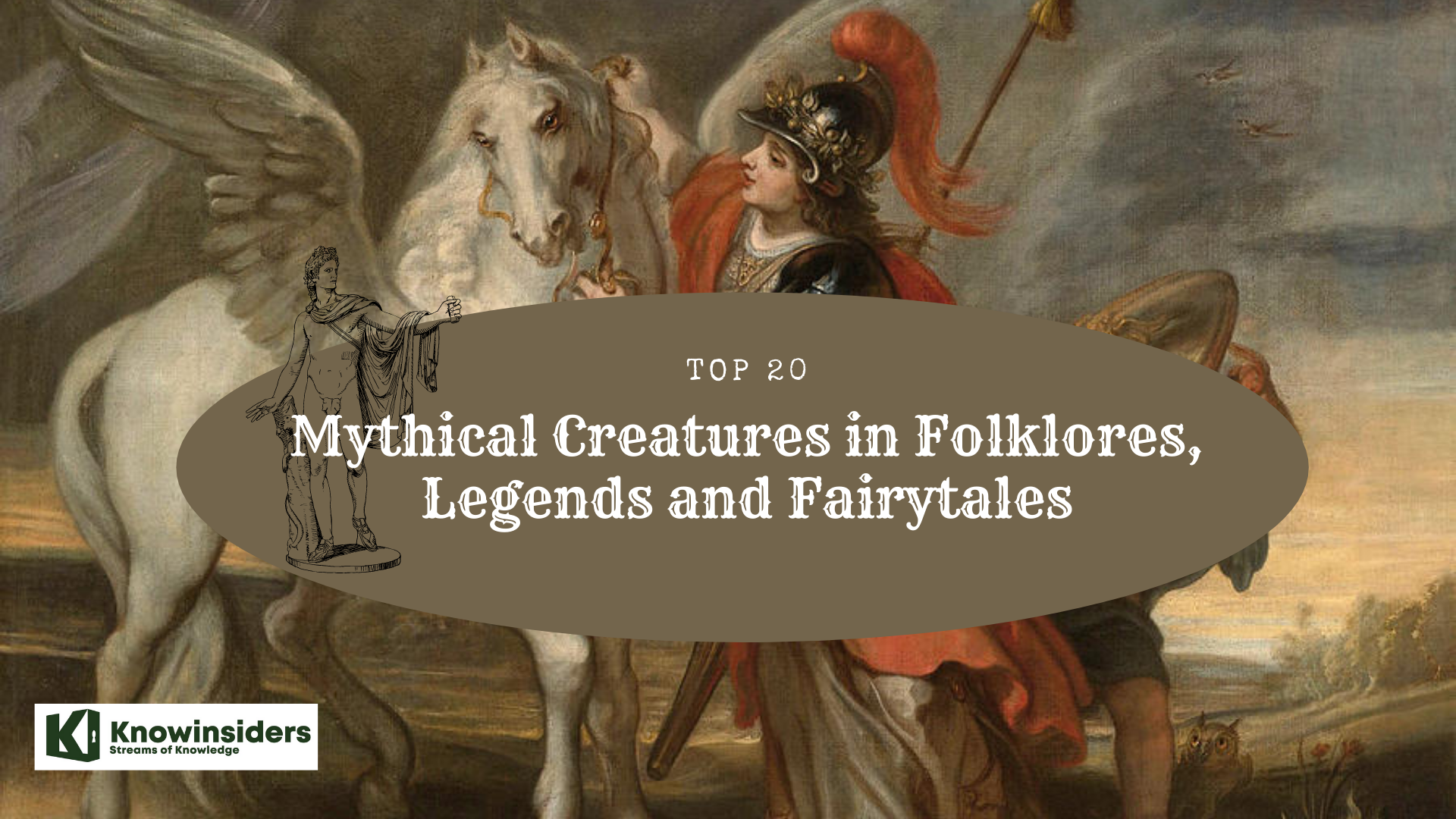 |
| Top 20 mythical creatures in Folklores, Legends and Fairytales |
For centuries or more, tales of mythological creatures and mythical beasts have captured our minds. Stories of mythical animals, mythical monsters, and other cool mythical creatures continue to spread across the world through books, film, television, and many other media sources.
The top 20 list below showcases an epic collection of mythical creatures that fascinate and evoke curiosity of the unknown.
List of top 20 most mythical creatures from legends, folklore and fairytales
20. Unicorn
19. Redcap
18. Basilisk
17. Phoenix
16. Griffin
15. Pegasus
14. Kappa
13. Fairy
12. Werewolf
11. Fauns
10. Mermaid
9. Gorgon
8. Faeries (or Fairies)
7. Goblins
6. Gnomes
5. Leprechauns
4. Ogre
3. Cyclops
2. Oni
1. Golems
What are the most mythical creatures from legends, folklore and fairytales?
20. Unicorn
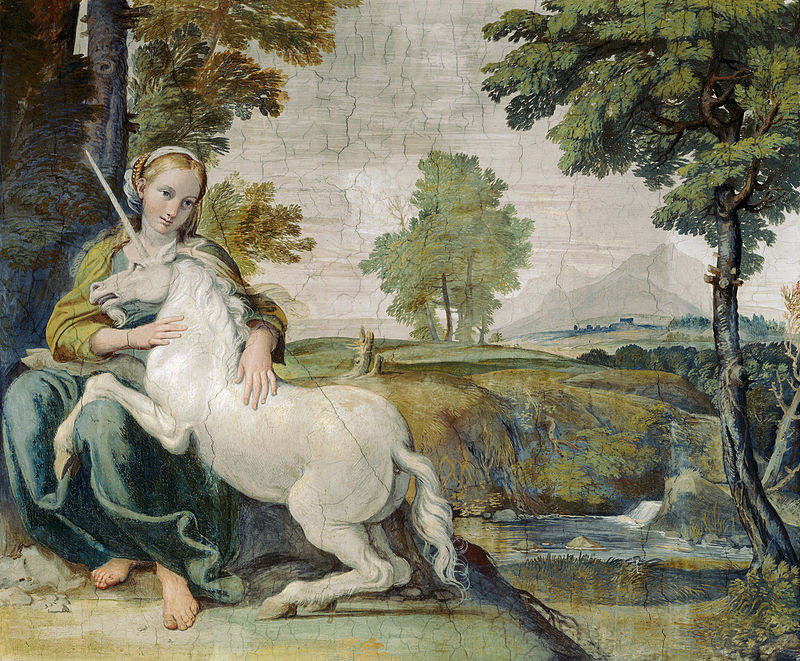 |
| The gentle and pensive maiden has the power to tame the unicorn, fresco by Domenichino, c. 1604–05 (Palazzo Farnese, Rome) |
A unicorn is a legendary creature that is known to possess magical abilities. Though in modern day this creature is thought to be nothing more than a myth, ancient cultures wrote of it as a real animal. In fact, it was included in many natural history books of the time.
The most popular depictions of the unicorn are known by Greek and European accounts and mythology, though there are similar unicorn-like creatures that have been recorded throughout the world. There were many interpretations of the beast – some saw it as the incarnation of purity and grace. Some believed that the horn of the beast had the power to provide cures for sickness and the ability to serve as an antidote for poison.
Because of its supposed magical abilities, the unicorn and its horn was greatly sought after by anyone with means in the early ages. It was common for those of great wealth or nobility to attempt to procure a horn to protect themselves against attacks or to extend their lifespan in general. In fact, many ‘horns’ were sold by traders who came from the north and south. While these were not unicorn horns (they were either rhinoceros horns or narwhal horns), they sold for many times their weight and gold and proved to be a very profitable industry.
19. Redcap
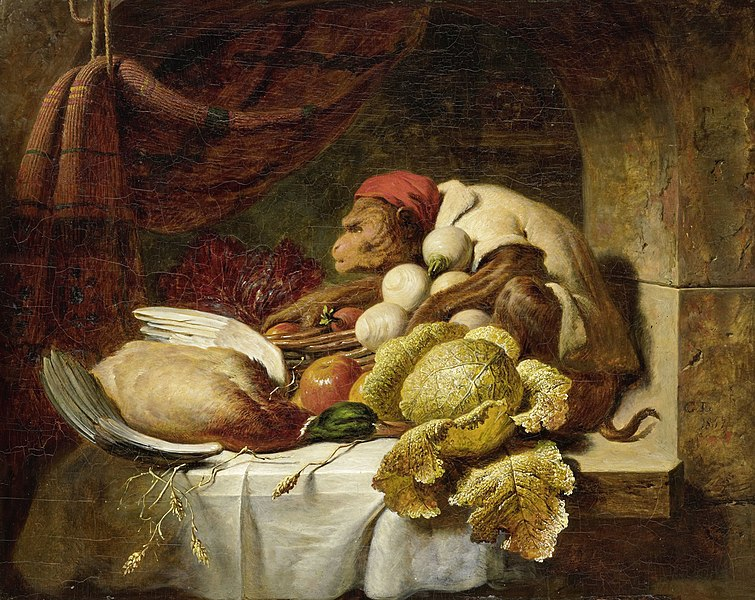 |
| Photo: "Red Cap" by Geogre Lance (1802 - 1864) |
A Red Cap or Redcap (also known as a powrie or dunter) is a type of malevolent murderous dwarf in English and Scottish Folklore.
They are said to inhabit ruined castles found along the border between England and Scotland.
Redcaps are said to murder travellers who stray into their homes and dye their hats with their victims' blood (from which they get their name).
Redcaps must kill regularly, for if the blood staining their hats dries out, they die. Redcaps are very fast in spite of the heavy iron pikes they wield and the iron-shod boots they wear. Outrunning a redcap is supposedly impossible.
Redcap is depicted as "a short, thickset old man with long prominent teeth, skinny fingers armed with talons like eagles, large eyes of a fiery red colour, grisly hair streaming down his shoulders, iron boots, a pikestaff in his left hand, and a red cap on his head".
 Top 10 Most Mysterious People In The World Top 10 Most Mysterious People In The World There are things on earth that we have never found out, as for the list of the 10 most mysterious people in the world right ... |
18. Basilisk
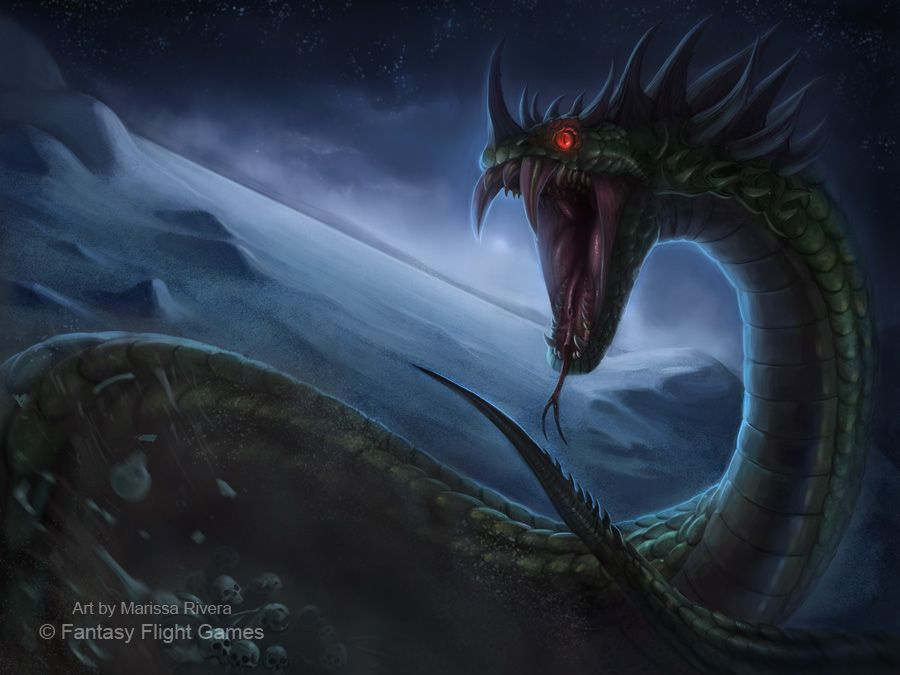 |
| Photo: Marissa Rivera |
The Basilisk (Latin Basiliscus, Basilisc, plural Basilisci, also Basilicok, Greek: Basiliskos plural: Basiliskoi) appeared in various forms throughout history. It started off as a small, crowned snake being able to kill with its lethal poison and evil gaze. The poison was so lethal, it left a wide trail of venom in its wake.
Despite its cruel nature, it still represents power (and sometimes that of Hell in Christian mythology), thus it became the guardian creature and the traditional symbol of the Swiss city Basel.
The basilisk is believed to be the most poisonous creature ever lived, there are tales where the basilisk was killed by a spear from horse-back, but the poison flowed upward and killed both the man and the ride. Its presence is so tainting, that not only herbs die of its terrible breath, but stones shatter as well. The basilisk's venom is so strong, that upon drinking from a well, the water remains polluted for centuries, bringing death to anyone drinking it.
The basilisk can only be a male, for it must have the most proper receptacle of venom and destructive qualities. It’s is also said to be so evil that when it cannot petrify animals, it turns to plants, withering them anywhere it goes.
17. Phoenix
 |
| Photo: OLHA DARCHUK |
The Phoenix (Ancient Greek: Φοῖνιξ, phoínix, Persian: ققنوس, Arabic: طائر الفينيق, Hindi: फ़ीनिक्स) is a mythical, sacred firebird that can be found in the mythologies of the Egyptians, Greeks, Persians, Romans, (according to Sanchuniathon) Phoenicians, Hindus, and other cultures.
The phoenix is a mythical bird that is the true spirit of fire with a colorful plumage and a tail of gold or yellow and red. It was said to have eyes as blue as sapphires. It was said to be the spirit of Ra himself because its fire was so fierce. It has a 500 to 1000 year life-cycle, near the end of which it builds itself a nest of incense and sacred materials that it then ignites; the bird burned fiercely, then was reduced to ashes, from which the new, young phoenix arises, reborn anew to live a better life than the previous one.
The new phoenix is destined to live as long as its previous incarnation. In some stories, the new phoenix embalms the ashes of its old self in an egg made of myrrh and deposits it in the Egyptian city of Heliopolis (literally "sun-city" in Greek). It is said that the bird's cry is that of a beautiful song. The Phoenix's ability to be reborn from its own ashes makes it essentially immortal. In very few stories, they are able to change into people and other birds. There is only ever one phoenix at a time. The tears of the phoenix have the ability to heal any wound or infection and raise the dead. The phoenix's size is not definite since it can change its size, but its typical size is the size of a house.
 Top 10 Monster and Creatures of Greek Mythology Top 10 Monster and Creatures of Greek Mythology Greek Mythology has its own charms, and it is an infinite soure of inspiration for artists, poets and writers to explore. Here is the top ... |
16. Griffin
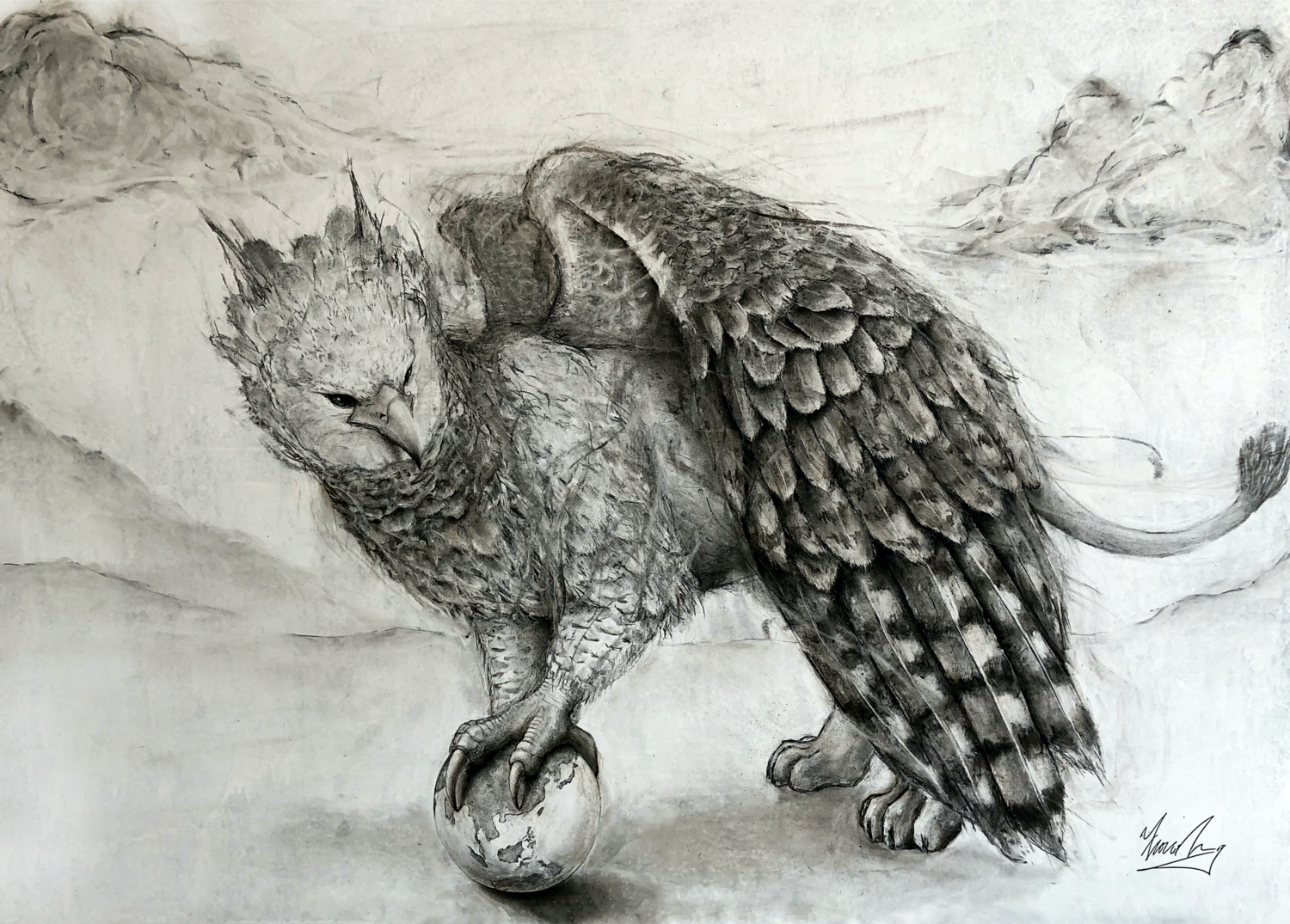 |
| Photo: Chacoal sketch by Fiona Tang |
Griffin, also spelled griffon or gryphon, composite mythological creature with a lion’s body (winged or wingless) and a bird’s head, usually that of an eagle. The griffin was a favourite decorative motif in the ancient Middle Eastern and Mediterranean lands. Probably originating in the Levant in the 2nd millennium BCE, the griffin had spread throughout western Asia and into Greece by the 14th century BCE. The Asiatic griffin had a crested head, whereas the Minoan and Greek griffin usually had a mane of spiral curls. It was shown either recumbent or seated on its haunches, often paired with the sphinx; its function may have been protective.
In the Iron Age the griffin was again prominent in both Asia and Greece. Greek metalworkers evolved a handsome stylized rendering, the beak open to show a curling tongue and the head provided with horses’ ears and a large knob on top. Apparently the griffin was in some sense sacred, appearing frequently in sanctuary and tomb furnishings. Its precise nature or its place in cult and legend remains unknown.
15. Pegasus
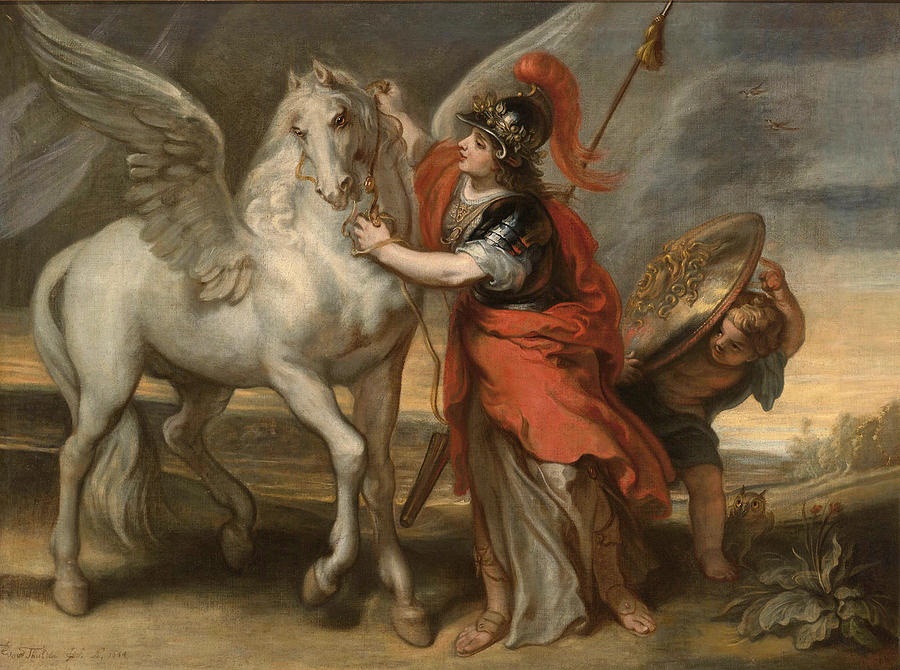 |
| Athena and Pegasus is a painting by Theodoor van Thulden. Photo: Fine Art America |
In Greek mythology, Pegasus was an immortal winged horse, one of the two children of Poseidon and Medusa. Along with his brother, the golden-sworded Chrysaor, Pegasus sprang forth most miraculously from his pregnant mother’s neck after Perseus had beheaded her. He belonged to the Greek hero Bellerophon for some time, before being stabled by Zeus and tasked with drawing the chariot of his thunderbolts.
For a brief period of time, Pegasus belonged to a mortal, Bellerophon, the celebrated hero and slayer of monsters.
Notoriously wild and free-roaming, Pegasus was finally tamed by one of the greatest Greek heroes, Bellerophon. But he didn’t do it by himself: he had a lot of help from Athena. According to Pindar, one of the most celebrated Ancient Greek poets, the goddess gifted him with a charmed golden bridle, which Bellerophon used to capture Pegasus when the stallion was drinking water at the Pierian spring, another water source associated with Pegasus and the Muses.
Riding on Pegasus, Bellerophon was capable of overcoming the Amazons, the fire-breathing Chimaera, and the warlike Solymi. In addition, Pegasus was the means through which Bellerophon exacted his revenge on Jobates’ wife, Stheneboea, who testified falsely against Bellerophon after he had rejected her advances. According to some, afterward Bellerophon offered her a ride on Pegasus, which she gladly accepted; however, as they were flying over the sea, the winged stallion flung her down to its depths.
Little did Bellerophon knew at the time that he would meet a similar fate. After his numerous victories against all kinds of opponents, Bellerophon started believing that the mortals aren’t worthy of his presence and that he deserves to live among the gods on Mount Olympus. So, he mounted his faithful horse and started his faithful journey upward. Zeus, angered by Bellerophon’s hubris, soon sent a gadfly which stung Pegasus bad enough that the winged horse threw his rider down to earth and to his death.
 15 Weirdest Animals in the World You Probably Didn't Know Exist 15 Weirdest Animals in the World You Probably Didn't Know Exist With more than 8 million species of living things on Earth, no wonder that nobody knows or has seen them all. That's why we've chosen ... |
14. Kappa
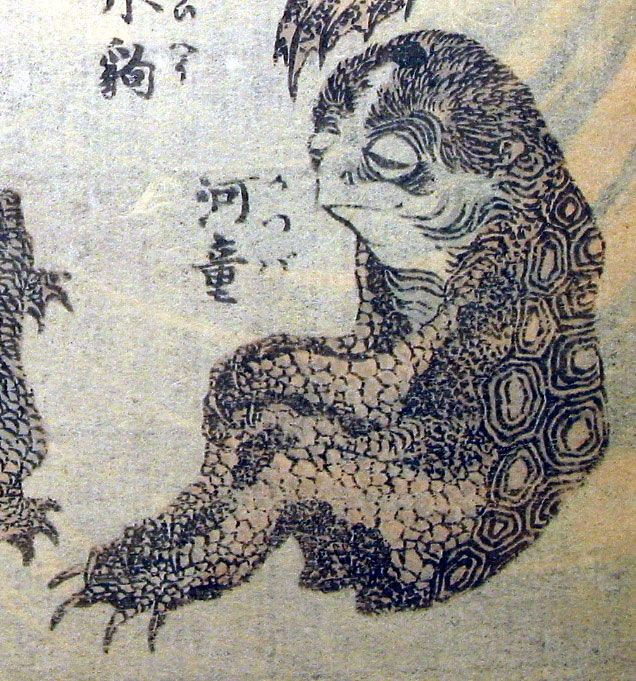 |
| Photo: Hokusai |
A kappa (河童, river-child)—also known as kawatarō (川太郎, "river-boy"), komahiki (駒引, horse-puller), kawatora (川虎, river-tiger) or suiko (水虎, water-tiger)–is an amphibious yōkai demon or imp found in traditional Japanese folklore. They are typically depicted as green, human-like beings with webbed hands and feet and a turtle-like carapace on their backs. A depression on its head, called its "dish" (sara), retains water, and if this is damaged or its liquid is lost (either through spilling or drying up), the kappa is severely weakened.
The kappa are known to favor cucumbers and love to engage in sumo wrestling. They are often accused of assaulting humans in water and removing a mythical organ called the shirikodama from their victim's anus.
Kappa are usually seen as mischievous troublemakers or trickster figures. Their actions range from the comparatively minor, such as looking up women's kimono if they venture too near to water, to the outright malevolent, such as drowning people and animals, kidnapping children, raping women and at times eating human flesh. Though sometimes menacing, it may also behave amicably towards humans. While younger kappa are frequently found in family groups, adult kappa live solitary lives. However, it is common for kappa to befriend other yōkai and sometimes even people.
13. Hydra
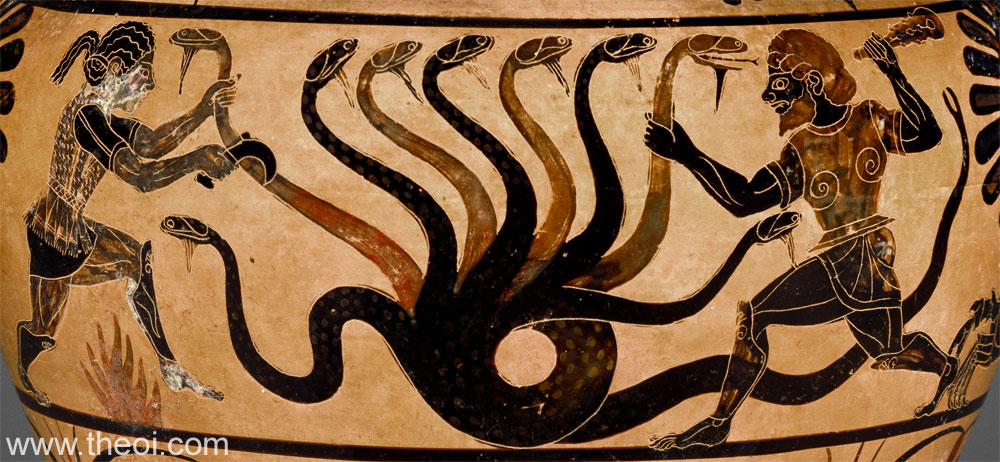 |
| The J. Paul Getty Museum, Malibu. |
Hydra, also called the Lernean Hydra, in Greek legend, the offspring of Typhon and Echidna (according to the early Greek poet Hesiod’s Theogony), a gigantic water-snake-like monster with nine heads (the number varies), one of which was immortal. The monster’s haunt was the marshes of Lerna, near Árgos, from which he periodically emerged to harry the people and livestock of Lerna. Anyone who attempted to behead the Hydra found that as soon as one head was cut off, two more heads would emerge from the fresh wound.
12. Werewolf
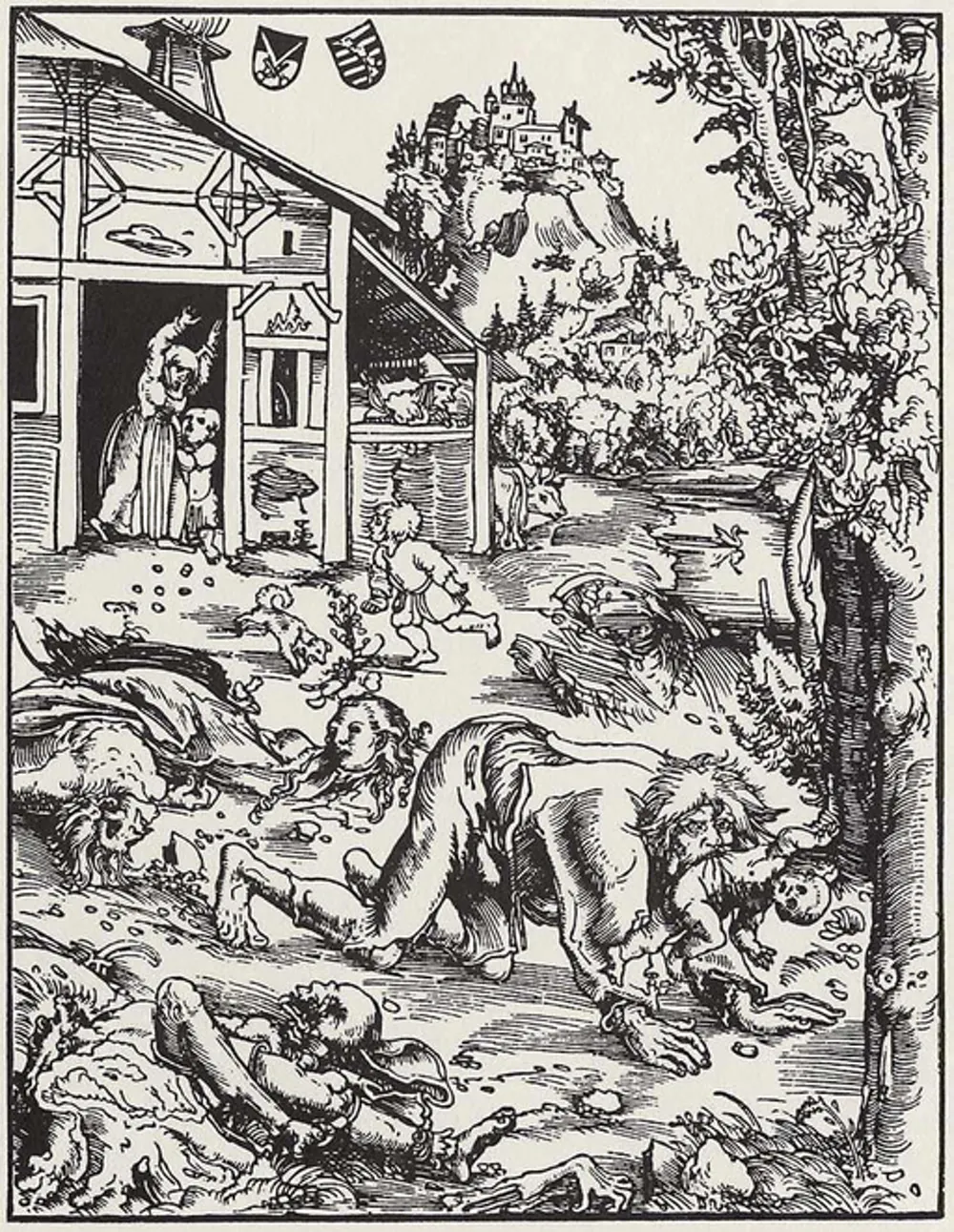 |
| A werewolf in a German woodcut, circa 1512. Wikimedia |
A werewolf, also known as a lycanthrope ("wolf-man"), is a mythological or folkloric human with the ability to shape shift into a wolf or an therianthropic hybrid wolf-like creature, either purposely or after being placed under a curse or affliction (e.g. via a bite or scratch from another werewolf). This transformation is often associated with the appearance of the full moon. Early sources for belief in lycanthropy are Petronius and Gervase of Tilbury.
In addition to the natural characteristics inherent to both wolves and humans, werewolves are often attributed strength and speed far beyond those of wolves or men. The werewolf is generally held as a European character, although its lore spread through the world in later times. Shape-shifters similar to werewolves are common in tales from all over the world.
Werewolves were said in European folklore to bear tell-tale physical traits even in their human form. These included the meeting of both eyebrows at the bridge of the nose, curved fingernails, low-set ears and a swinging stride. The appearance of a werewolf in its animal form varies from culture to culture, though it is most commonly portrayed as being indistinguishable from ordinary wolves save for the fact that it has no tail (a trait thought characteristic of witches in animal form), is often larger, and retains human eyes and voice.
11. Fauns
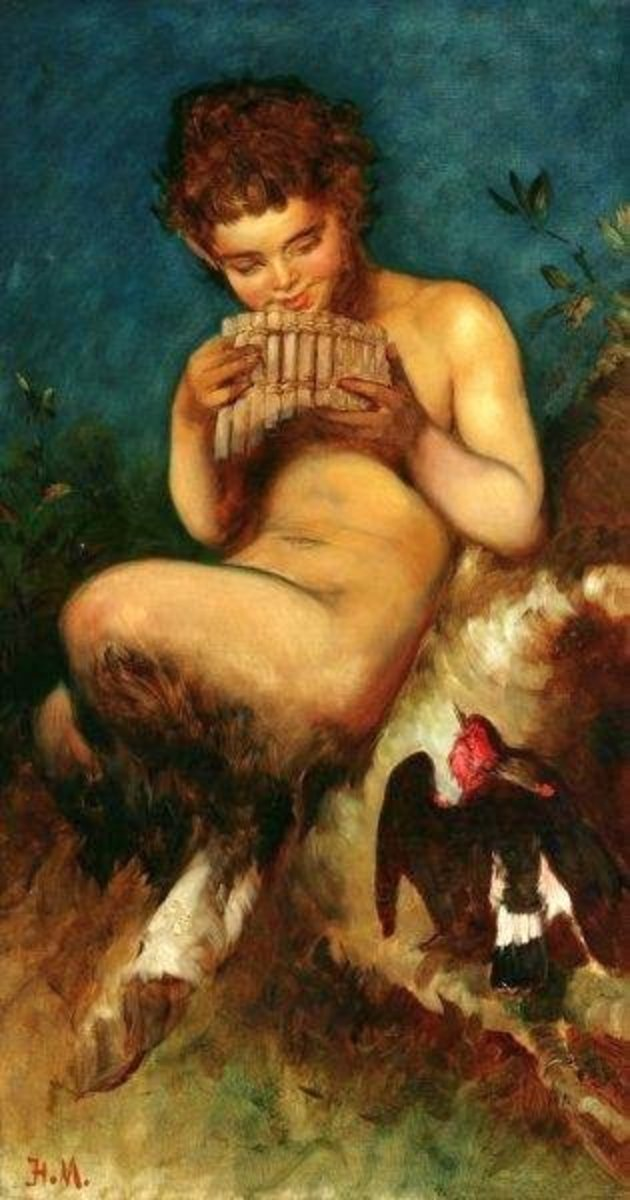 |
| Hans Makart (1840–1884) PD-art-100 |
The first fauns were mentioned in Greek and Roman mythology.
They lived in forests and in Greek mythology were associated with the Greek God Pan. Pan was the god of fields and forests and was connected to fertility. He is also the creator of the pan flute - an ancient musical instrument made from several pieces of reed or bamboo joined together.
At some point fauns were connected to satyrs, although originally they were different creatures. Satyrs were also companions of Pan and depicted with goat-like ears and tails. They were loves of wine, music, and women.
In Roman mythology there was a horned god called Faunus and a goddess (either his sister or wife) called Fauna. The fauns were their followers.
Fauns in later literature appear as human from head to waist and goat from the waist down, except that they also have goat horns on their heads. Quite strange really!
Generally they are connected to nature, particularly the forest, and seem to be some kind of spirit that can be helpful to human beings, or a hindrance, unpredictably. Travelers were said to encounter them in lonely places, far from human habitation. Their tales tended to inspire fear.
10. Mermaid
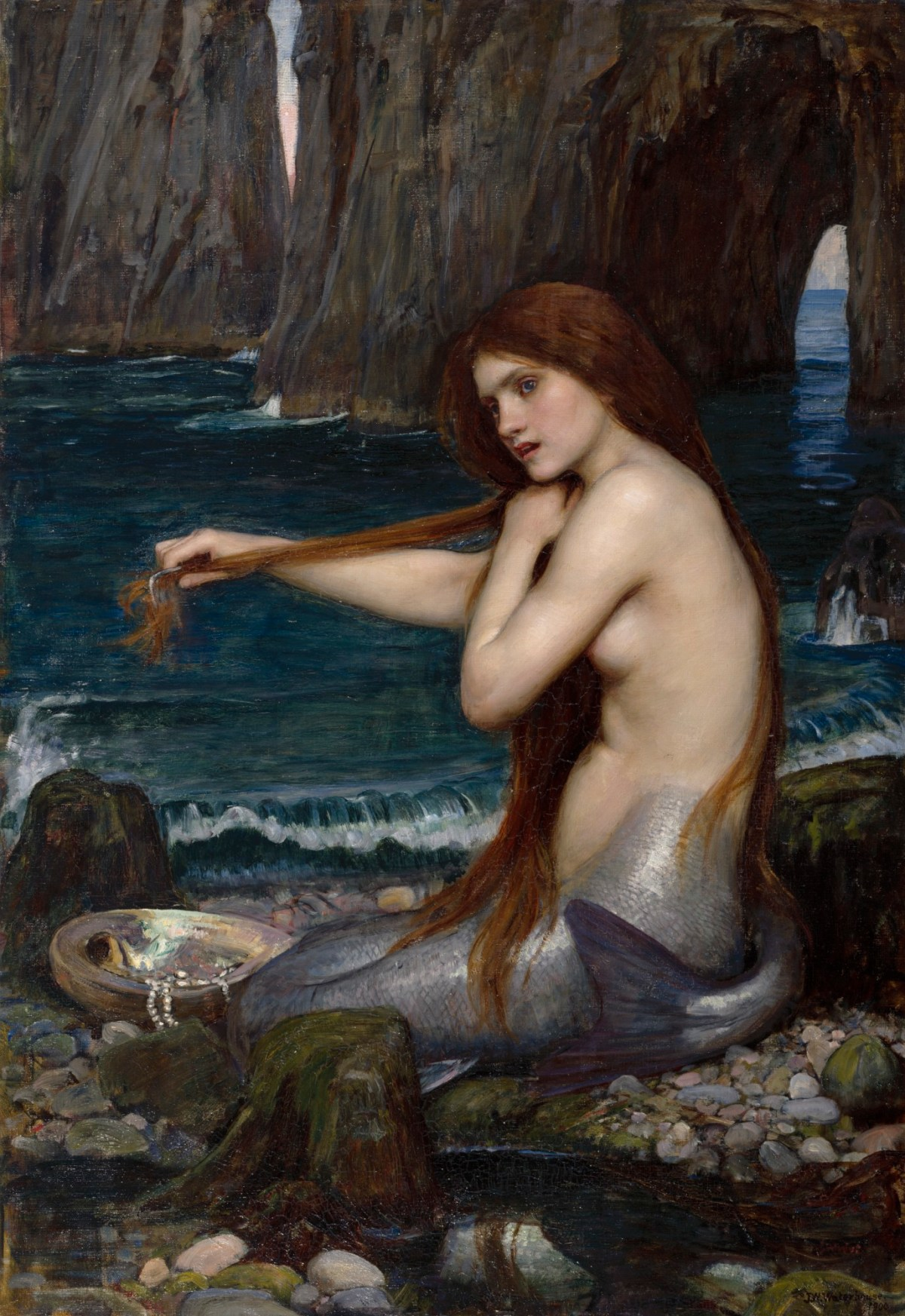 |
| Photo: John William Waterhouse (1849 - 1917) |
Mermaid, masculine merman, a fabled marine creature with the head and upper body of a human being and the tail of a fish. Similar divine or semidivine beings appear in ancient mythologies (e.g., the Chaldean sea god Ea, or Oannes). In European folklore, mermaids (sometimes called sirens) and mermen were natural beings who, like fairies, had magical and prophetic powers. They loved music and often sang. Though very long-lived, they were mortal and had no souls.
Many folktales record marriages between mermaids (who might assume human form) and men. In most, the man steals the mermaid’s cap or belt, her comb or mirror. While the objects are hidden she lives with him; if she finds them she returns at once to the sea. In some variants the marriage lasts while certain agreed-upon conditions are fulfilled, and it ends when the conditions are broken.
Though sometimes kindly, mermaids and mermen were usually dangerous to man. Their gifts brought misfortune, and, if offended, the beings caused floods or other disasters. To see one on a voyage was an omen of shipwreck. They sometimes lured mortals to death by drowning, as did the Lorelei of the Rhine, or enticed young people to live with them underwater.
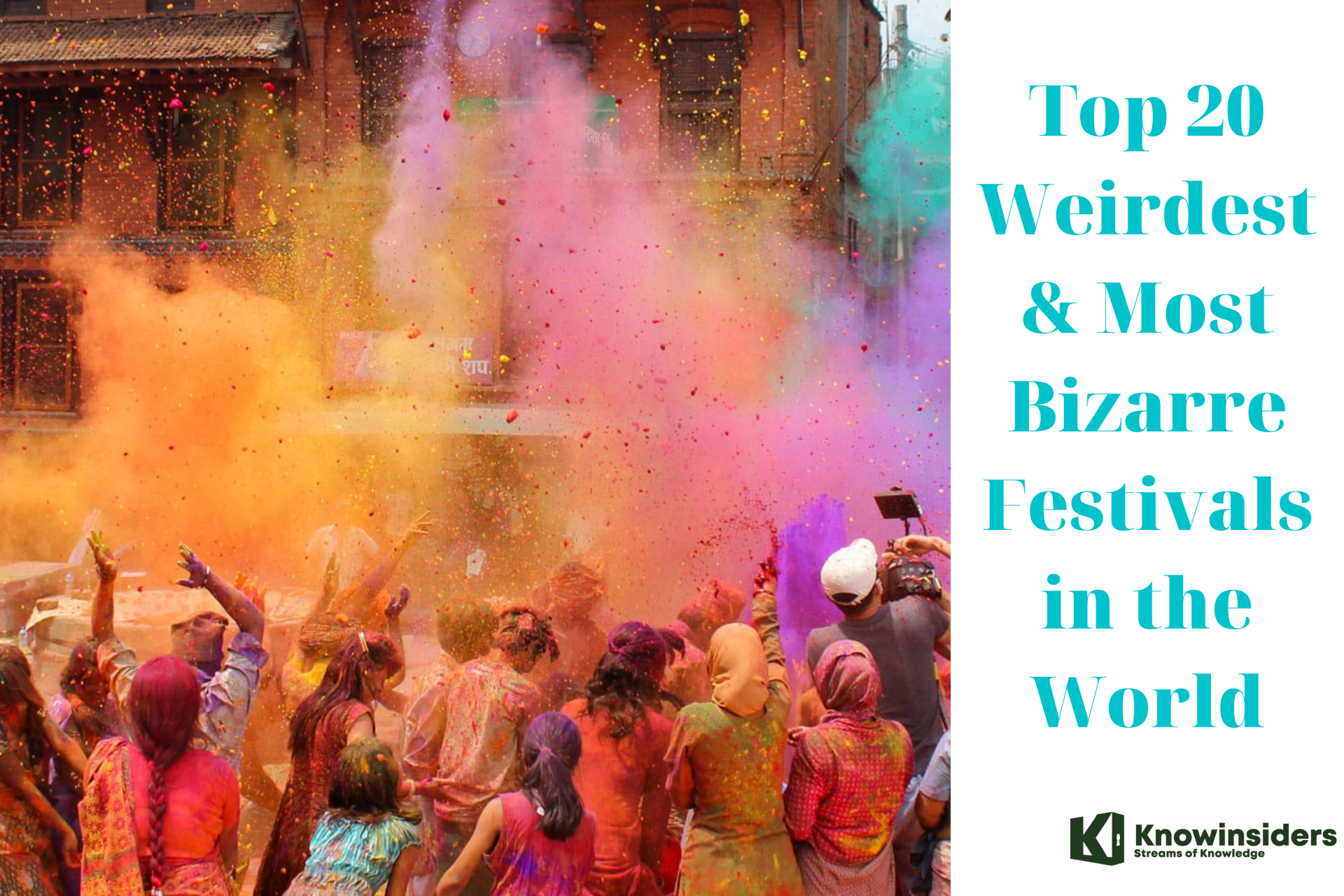 Top 20 Weirdest and Most Bizarre Festivals in the World Top 20 Weirdest and Most Bizarre Festivals in the World Festivals play an important role in humans' religious practice and culture, yet there are some strange festivals that you might not think exist. What are ... |
9. Gorgon
Greek mythology was full of monsters, but few were as deadly as the Gorgons. In this lesson, we'll check out these creatures and see what role they played in Greek myths.
Like most Greek myths, the actual description of these characters changed over time. In some of the oldest versions of these myths, there was only one Gorgon, a female who was produced by the personification of Earth (Gaea) to help the Titans battle the gods. Homer described a single Gorgon as a monster living in the underworld.
It was the 7th-century BCE Greek poet Hesiod, however, who established the more popular view of the Gorgons. According to him, there were three Gorgons. Their names were Stheno (the Mighty or Strong), Euryale (the Far Springer) and Medusa (the Queen). Hesiod described these three sisters as being ugly inside and out- their monstrous personalities were mirrored externally by their wings, scale-covered bodies, tusks, and claws.
8. Faeries (or Fairies)
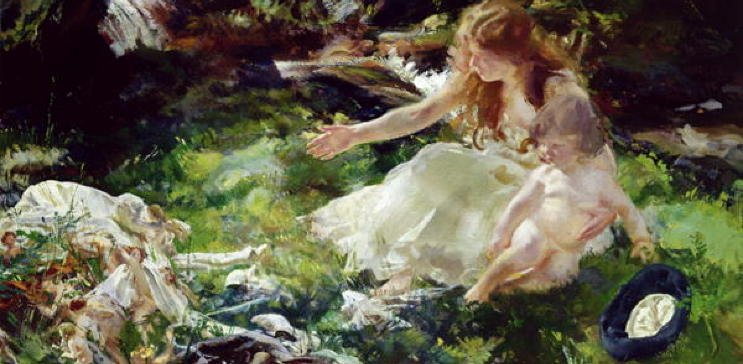 |
| Painting of artist Charles Sims. Photo: 1st Art Gallery |
Fairy, also spelled faerie or faery, a mythical being of folklore and romance usually having magic powers and dwelling on earth in close relationship with humans. It can appear as a dwarf creature typically having green clothes and hair, living underground or in stone heaps, and characteristically exercising magic powers to benevolent ends; as a diminutive sprite commonly in the shape of a delicate, beautiful, ageless winged woman dressed in diaphanous white clothing, inhabiting fairyland, but making usually well-intentioned intervention in personal human affairs; or as a tiny, mischievous, and protective creature generally associated with a household hearth.
While the term fairy goes back only to the Middle Ages in Europe, analogues to these beings in varying forms appear in both written and oral literature, from the Sanskrit gandharva (semidivine celestial musicians) to the nymphs of Greek mythology and Homer, the jinni of Arabic mythology, and similar folk characters of the Samoans, of the Arctic peoples, and of other indigenous Americans. The common modern depiction of fairies in children’s stories represents a bowdlerization of what was once a serious and even sinister folkloric tradition. The fairies of the past were feared as dangerous and powerful beings who were sometimes friendly to humans but could also be cruel or mischievous.
Fairies are usually conceived as being characteristically beautiful or handsome and as having lives corresponding to those of human beings, though longer. They have no souls and at death simply perish. They often carry off children, leaving changeling substitutes, and they also carry off adults to fairyland, which resembles pre-Christian abodes of the dead.
7. Goblins
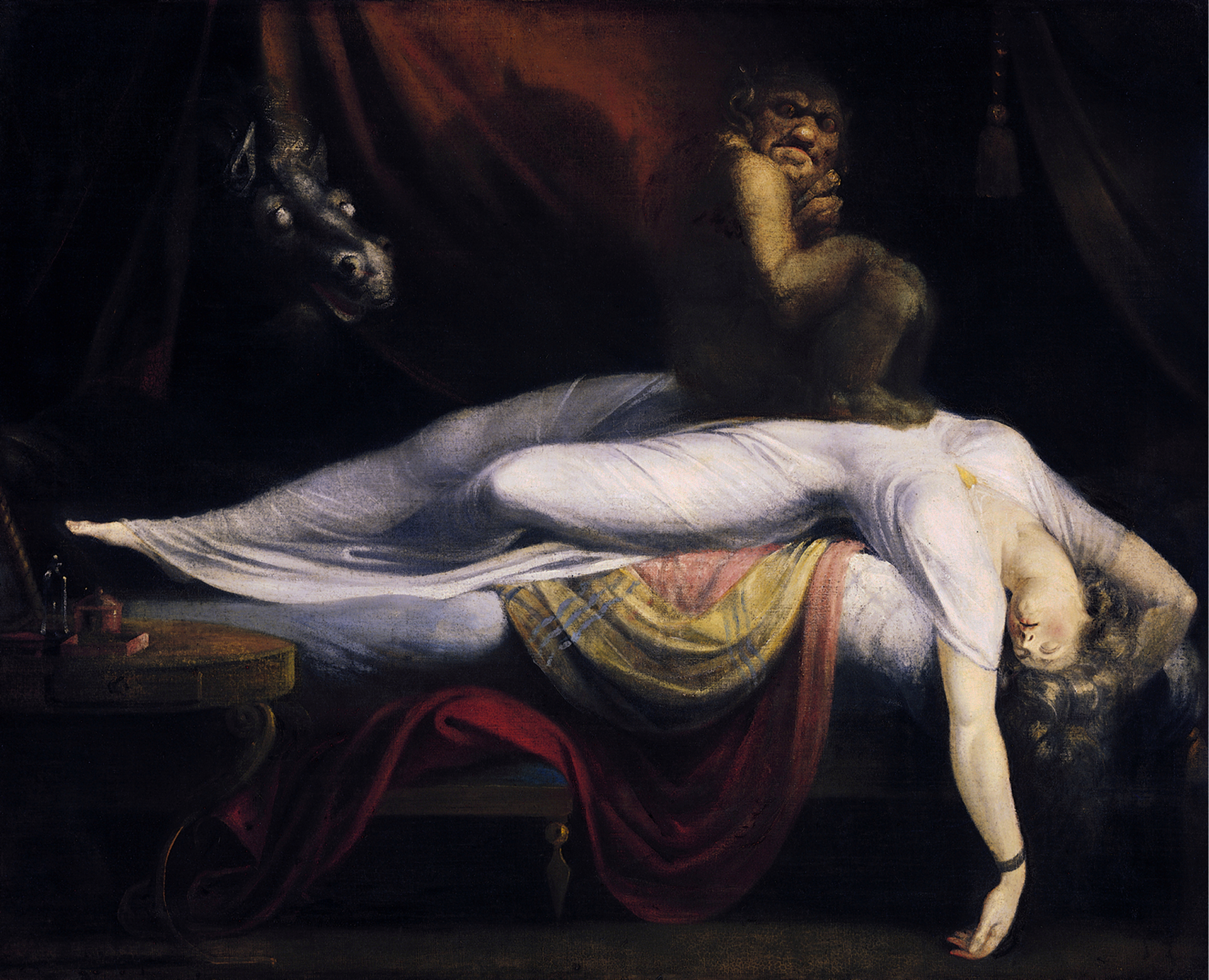 |
| "The Nightmare" is a painting by Henry Fuseli. Photo: Fine Art America |
A goblin is a type of fairy originally from European folklore. The word "goblin" is originally derived from the Greek word "Kobalos," which translates into English as "Rogue" or "Evil Spirit" The word goblin has traditionally been reserved for any ugly fairy that is either mischievous or malevolent. Because of this, the term goblin has been used to describe a wide variety of creatures found in a multitude of traditions throughout Europe. The term goblin can be quite nebulous; and in some cases it can be unclear if a creature would be better described as a goblin, a fairy, or an elf.
After the publication of J. R. R. Tolkien's The Hobbit in 1937 and The Lord of the Rings trilogy between 1954 and 1955, the view of goblins in modern Western fantasy began to change. Goblins were now commonly seen as their own distinct race of humanoid creatures. Typical features of goblins in modern fantasy includes a shorter-than-human stature, either a flat or long and hooked nose, bat-like ears, and either a mischievous or malevolent demeanor.
Somewhat paradoxically, in the study of folklore the term goblin has at times been expanded to include a variety of creatures from non-Western traditions that are seen to be "goblin-like" by Western scholars.
6. Gnomes
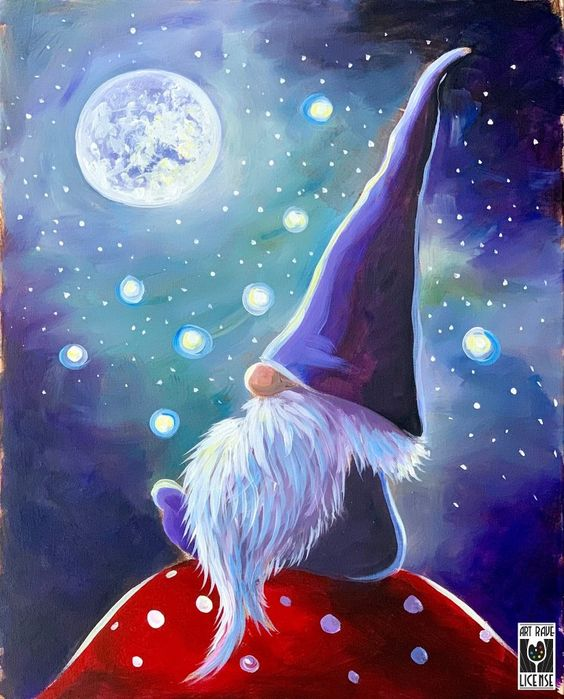 |
| Photo: Pottery Factory - Brookfield |
Gnomes are very widespread species, known to a number of human races. Believed to originate from Scandinavia, Gnomes later migrated to the lowlands some 1500 years ago.
Gnomes consist of a number of different types. The most common is the Forest Gnome who rarely comes into contact with man. The Garden Gnome lives in old gardens and enjoys telling melancoly tales. Dune Gnomes are slightly larger than their woodland breathren and choose remarkably drab clothing. House Gnomes have the most knowledge of man, often speaking his language. It is from this family that Gnome Kings are chosen. Farm Gnomes resemble their House brethen, but are more conservative in manner and dress. Siberian Gnomes have been more interbred than other Gnomes and associate freely with trolls . They are much larger than the other types and have an infinately more nasty nature. It is best never to evoke the ire of such Gnomes for they delight in revenge.
Gnomes tend to live in hilly meadows and rocky woodlands. In Huygen's book, it says they live in three trees, the house itself, with a hidden entrance from another tree, and then a third is the supply room, with grains, beans, potatoes and everything else the gnomes may need during the winter.
5. Leprechauns
 |
| Leprechaun's Lair is a painting by Heather Calderon. Photo: Fine Art America |
A leprechaun (Irish Gaelic: leipreachán) is a fairy-like creature in Irish mythology. They are often mischievous creatures who spend their time making shoes or hiding away their coins in hidden pots of gold at the end of rainbows. Leprechauns may grant wishes to humans who capture them.
The earliest known reference to the leprechaun appears in the medieval tale known as the Echtra Fergus mac Léti (English: Adventure of Fergus son of Léti). The text contains an episode in which Fergus mac Léti, King of Ulster, falls asleep on the beach and wakes to himself being dragged into the sea by three "lúchorpáin". He captures his abductors, who grant him three wishes in exchange for release.
The leprechaun is said to be a solitary creature, whose principal occupation is making and mending shoes, and who enjoys practical jokes. According to Yeats, the great wealth of these fairies comes from the "treasure-crocks, buried of old in war-time", which they have uncovered and appropriated. According to McAnally the leprechaun is the son of an "evil spirit" and a "degenerate fairy" and is "not wholly good nor wholly evil".
 20 Archaeological Discoveries - Incredible & Amazing of All Time 20 Archaeological Discoveries - Incredible & Amazing of All Time The following list of 20 Incredible & Amazing Archaeological Finds will take you on a trip through time and across the globe. |
4. Ogre
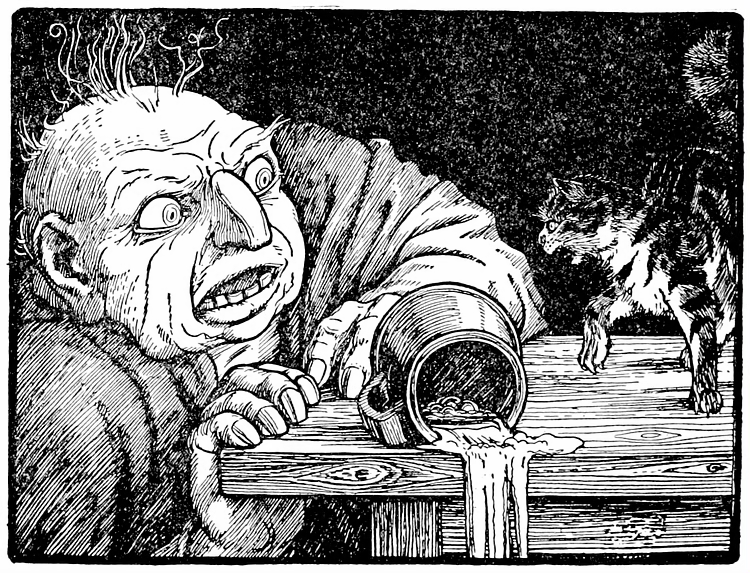 |
| An illustration of an ogre, a stock character in medieval folklore (From 'Europa's Fairy Book' by Joseph Jacobs and John Dickson Batten, 1916) |
An ogre (feminine ogress, doublet for orc) is a legendary monster usually depicted as a large, hideous, manlike being that eats ordinary human beings, especially infants and children. Ogres frequently feature in mythology, folklore, and fiction throughout the world. They appear in many classic works of literature, and are most often associated in fairy tales and legend with a taste for infants.
In mythology, ogres are often depicted as inhumanly large and tall and having a disproportionately large head, abundant hair, unusually colored skin, a voracious appetite, and a strong body. Ogres are closely linked with giants and with human cannibals in mythology. In both folklore and fiction, giants are often given ogrish traits (such as the giants in Jack and the Beanstalk and Jack the Giant Killer, the Giant Despair in The Pilgrim's Progress, and the jötnar of Norse mythology); while ogres may be given giantish traits.
3. Cyclops
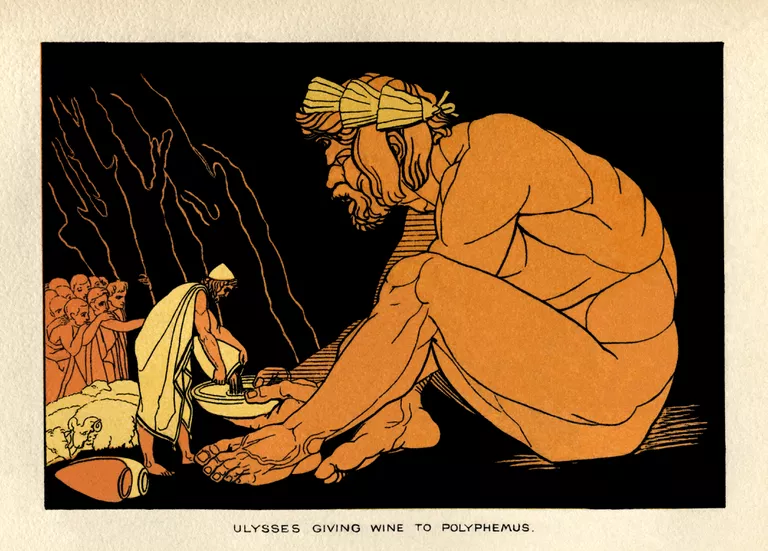 |
| Ulysses giving wine to the Cyclops Polyphemus. From “Stories From Homer” by Alfred J. Church, illustration by John Flaxman. Published by Seeley, Jackson & Halliday, London, 1878. whitemay / Getty Images |
The Cyclopes (singular: Cyclops) were gigantic, one-eyed beings with enormous strength. Originally, there were three of them: Arges, Steropes, and Brontes; capable blacksmiths, these were the sons of Uranus and Gaea and the brothers of the Hecatoncheires and the Titans. They were imprisoned by Cronus but released by his son Zeus, for whom they forged his famous thunderbolt as a sign of gratitude. However, at a later time, poets spoke of a different type of Cyclopes, a race of dim-witted and violent one-eyed shepherds dwelling in the caves of the island of Sicily. The most famous among them was Polyphemus, the Cyclops who fell in love with Galatea and was eventually blinded by Odysseus.
2. Oni
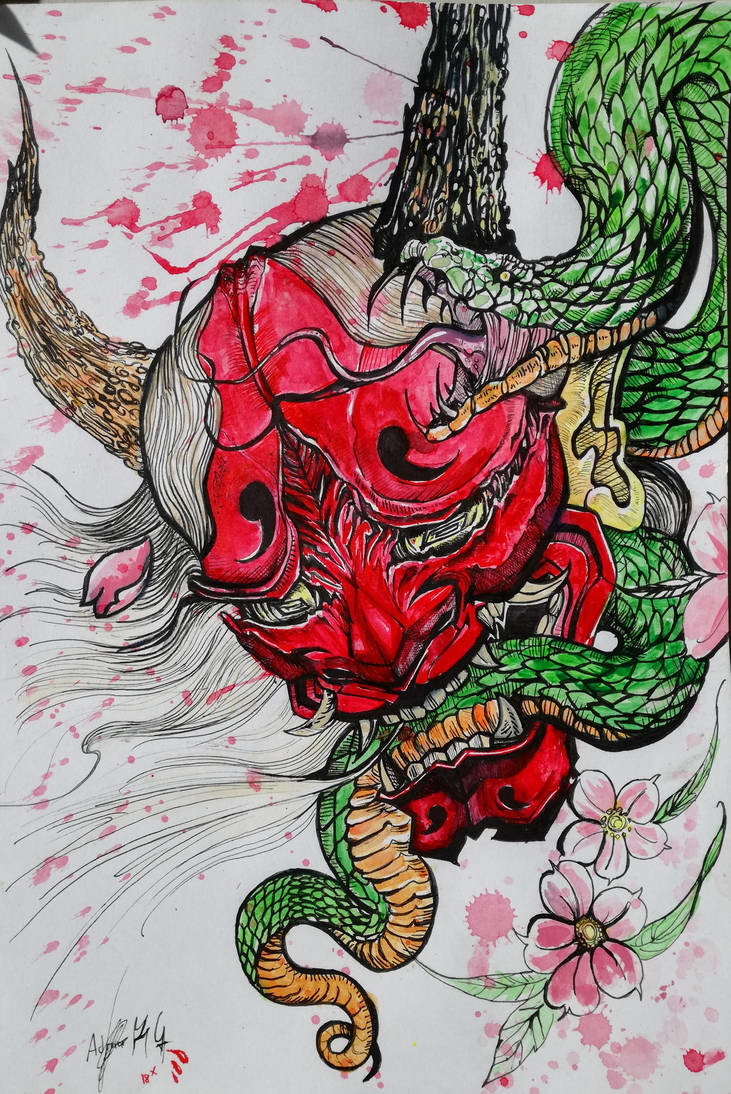 |
| Photo: Adrián Rullán Cubillas |
Oni, in Japanese folklore, a type of demonic creature often of giant size, great strength, and fearful appearance. They are generally considered to be foreign in origin, perhaps introduced into Japan from China along with Buddhism. Cruel and malicious, they can, nevertheless, be converted to Buddhism. Though oni have been depicted in various ways in Japanese legend and art, sometimes also as women, they are characteristically thought of as pink, red, or blue-grey in colour, with horns, three toes, three fingers, and on occasion with three eyes.
1. Golems
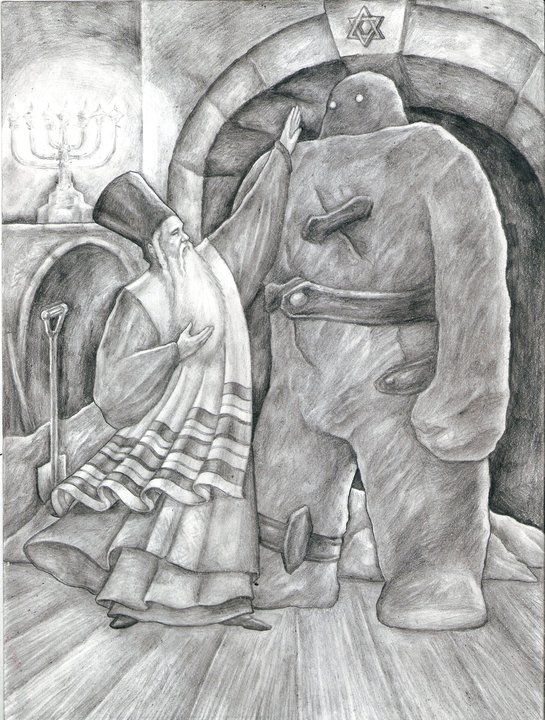 |
| Photo: Tres Bohemes |
Golem, in Jewish folklore, an image endowed with life. The term is used in the Bible (Psalms 139:16) and in Talmudic literature to refer to an embryonic or incomplete substance. It assumed its present connotation in the Middle Ages, when many legends arose of wise men who could bring effigies to life by means of a charm or of a combination of letters forming a sacred word or one of the names of God. The letters, written on paper, were placed in the golem’s mouth or affixed to its head.
The letters’ removal deanimated the golem. In early golem tales the golem was usually a perfect servant, his only fault being a too literal or mechanical fulfillment of his master’s orders. In the 16th century the golem acquired the character of protector of the Jews in time of persecution but also had a frightening aspect. The most famous tale involves the golem created by the 16th-century rabbi Judah Löw ben Bezulel of Prague. It was the basis for Gustav Meyrink’s novel Der Golem (1915) and for a classic of German silent films (1920), which provided many details on the movement and behaviour of man-made monsters that were later adopted in the popular American horror films on the Frankenstein theme.
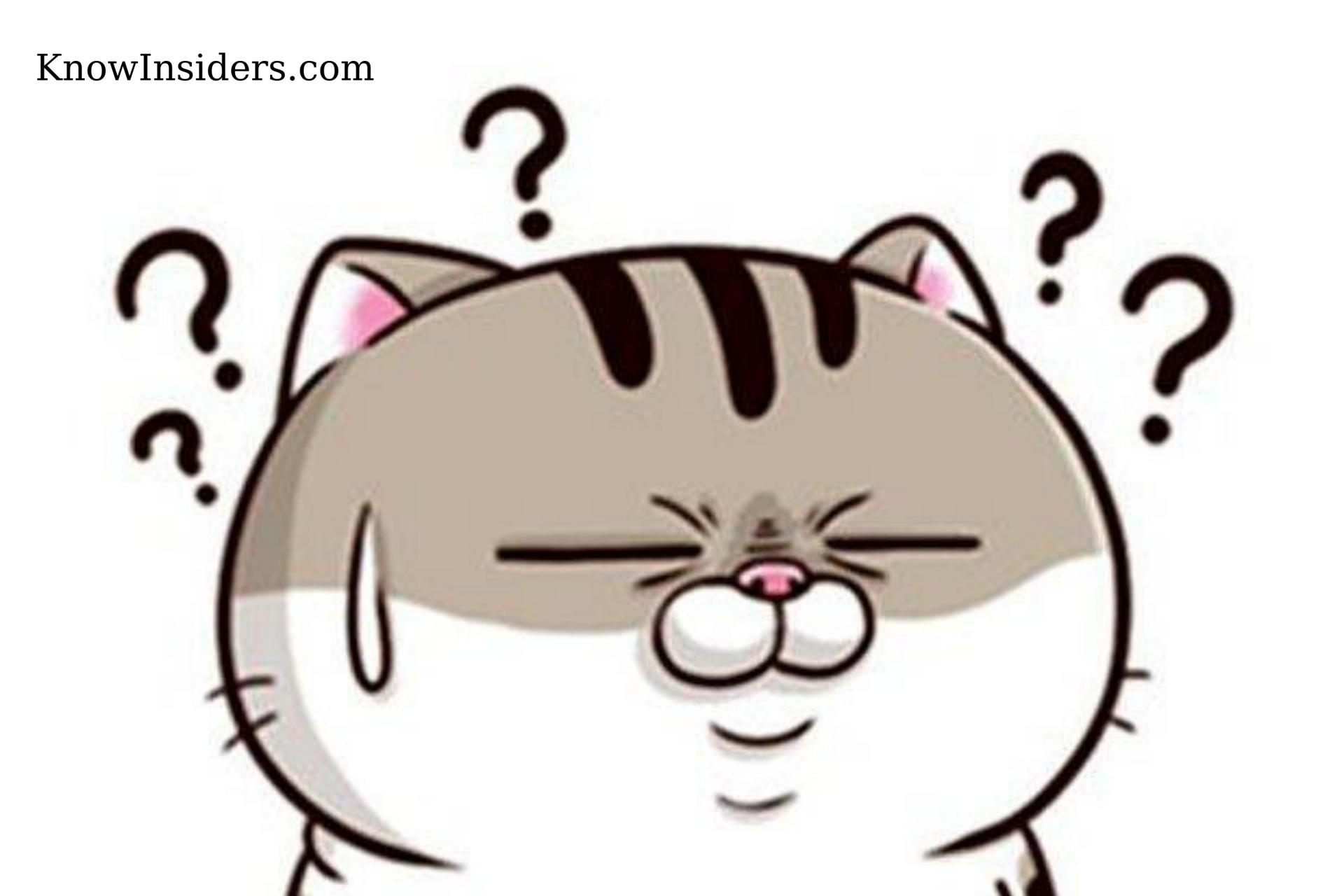 Top 20 Weird Things Humans Do Every Day Top 20 Weird Things Humans Do Every Day |
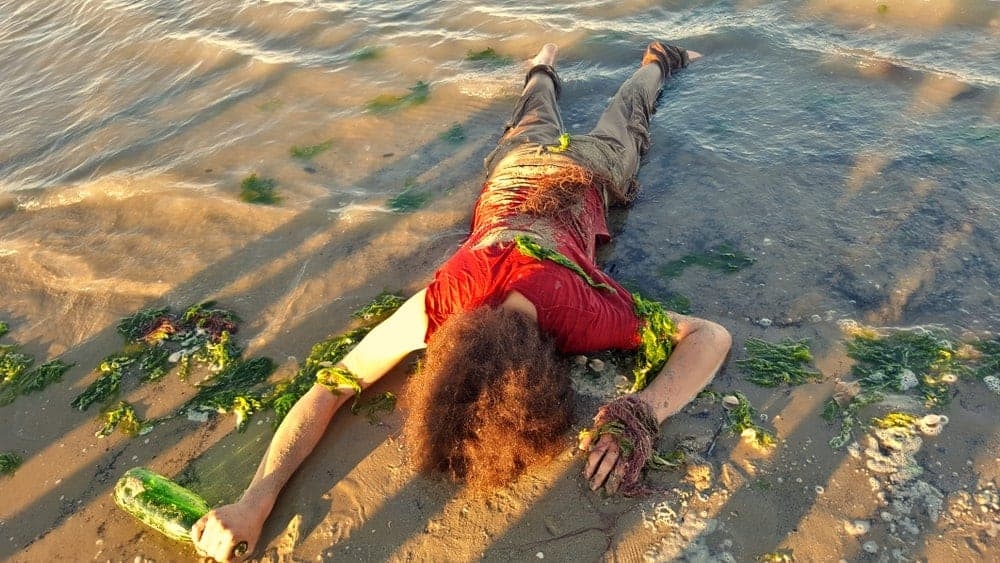 Top 20 Most Amazing Stories Of Survival In The World Top 20 Most Amazing Stories Of Survival In The World |
 Top 20 Weirdest and Most Bizarre Festivals in the World Top 20 Weirdest and Most Bizarre Festivals in the World |
 Top 20 Strangest and Unusual Hotels In The World Top 20 Strangest and Unusual Hotels In The World |























